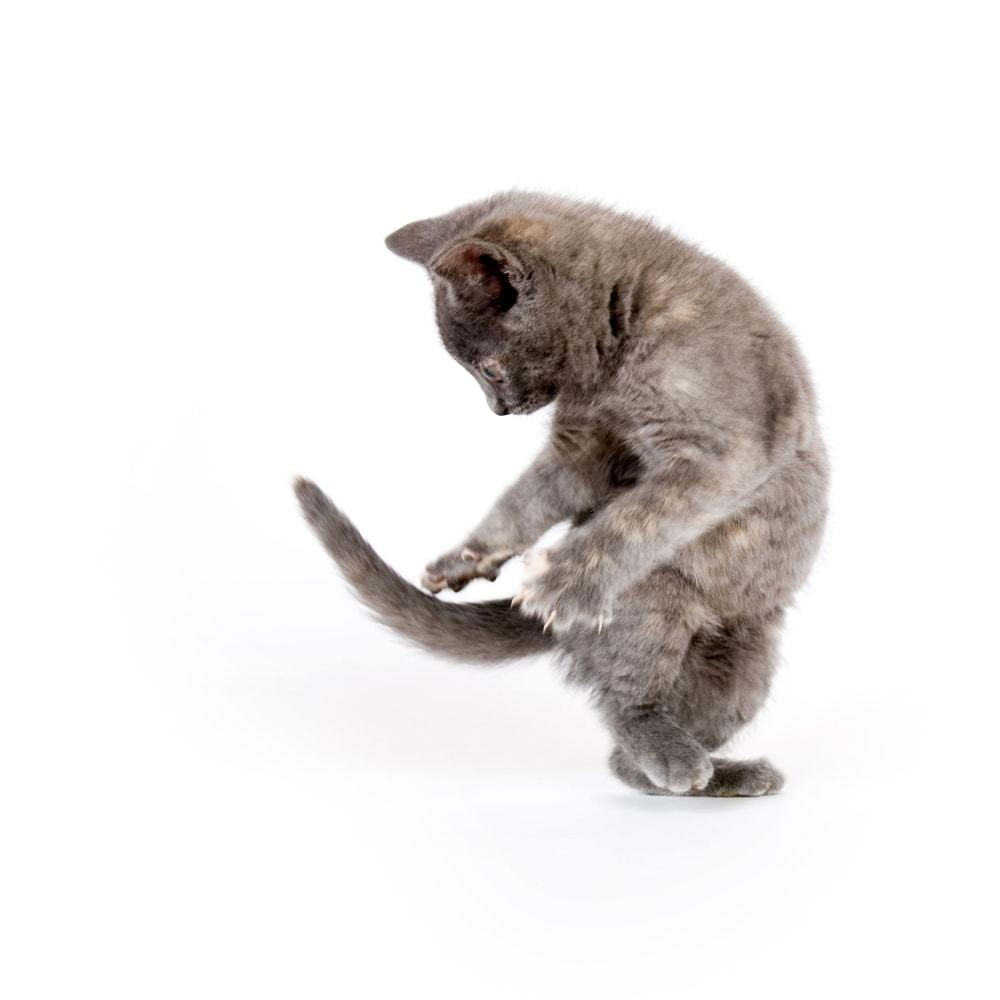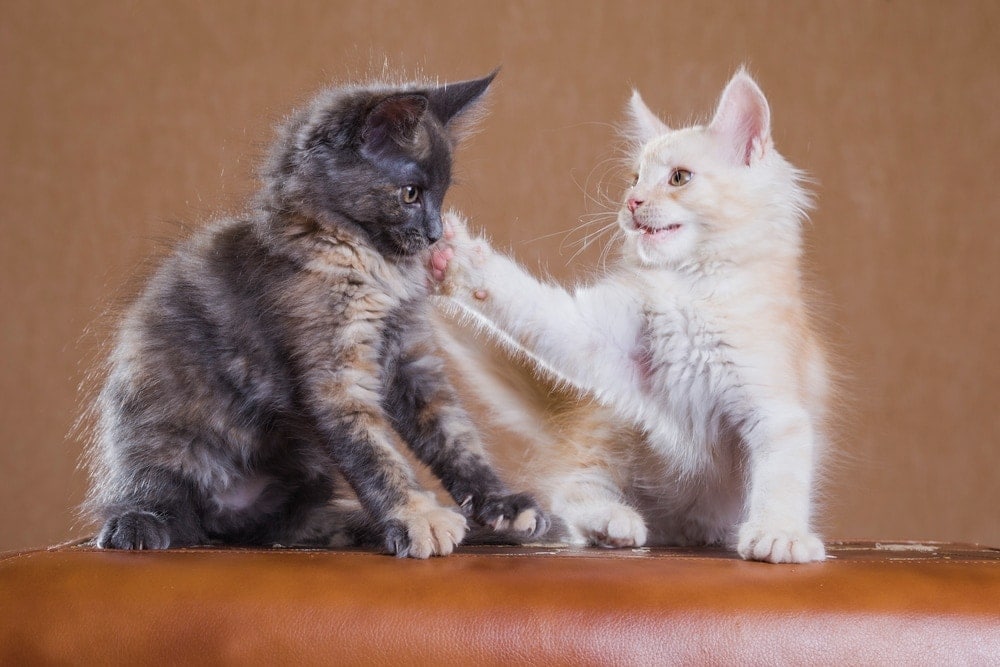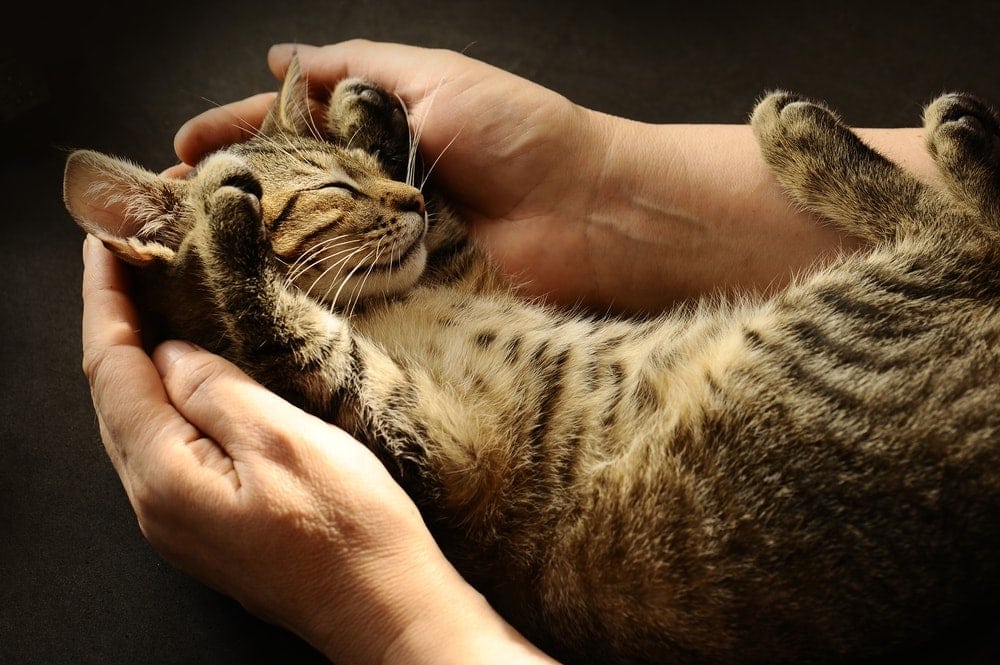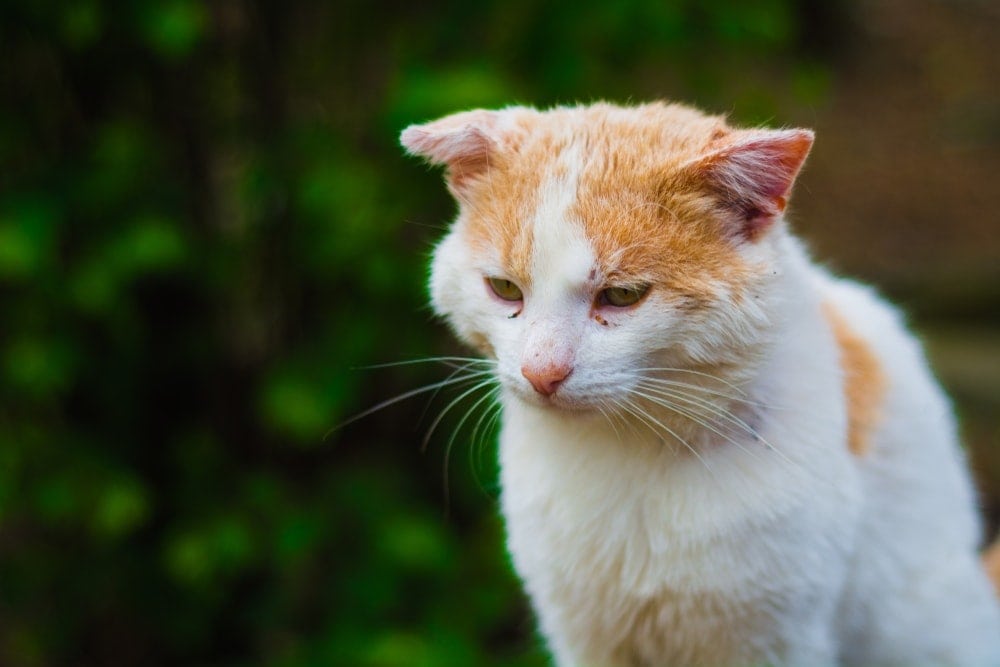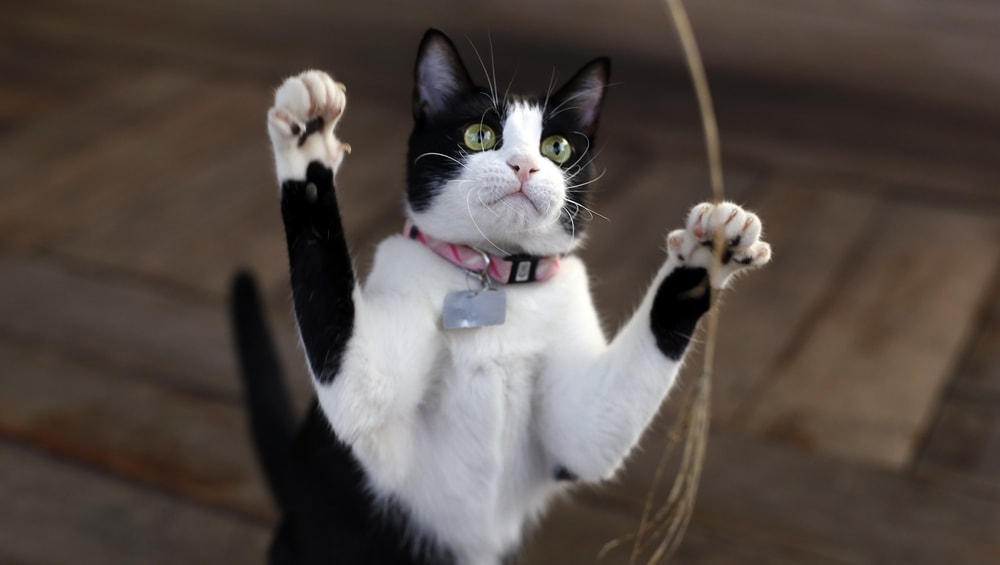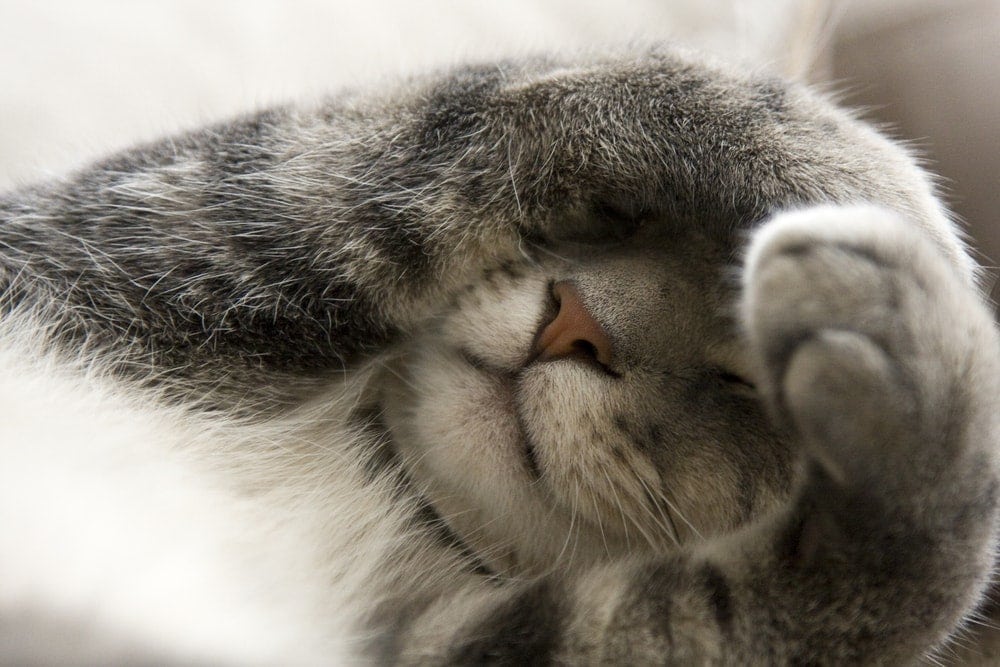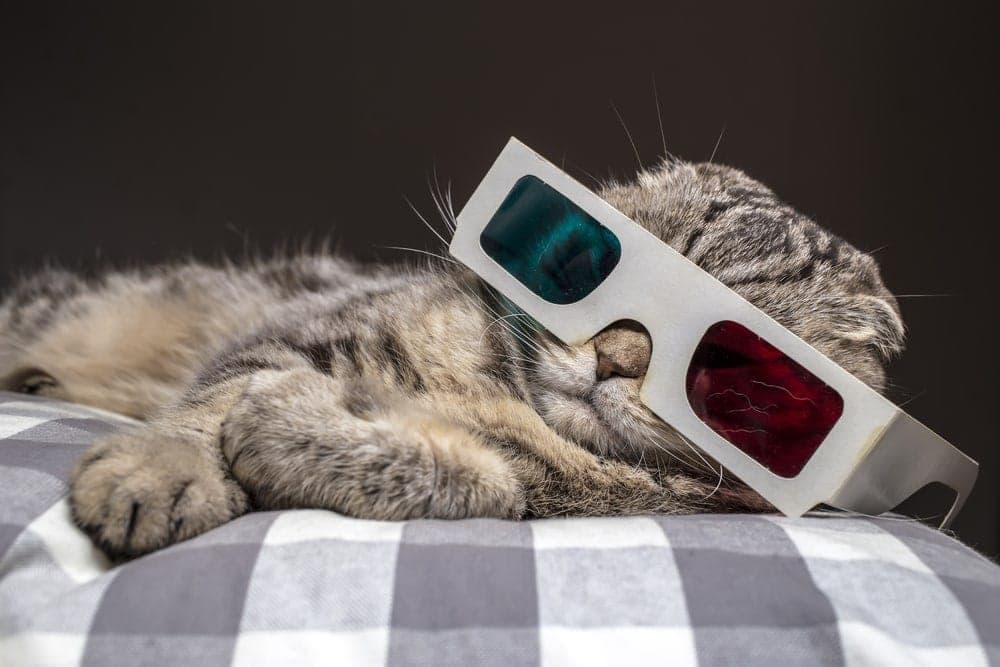While most people think of dogs when it comes to chasing tails, cats definitely do it too.
This is a silly behavior that can instantly put you in a better mood.
There are, however, different reasons that these animals do this.
Is it Normal for a Cat to Chase its Tail?
It is perfectly normal for a cat to chase its own tail. The fact is that this behavior is actually just part of their natural instincts. This might be your cat’s way of satisfying its inner hunter if you don’t let it outside.
These animals have a lot of energy and find all sorts of ways to expend it. While this can be a symptom of a problem with your cat, it’s far more likely that they are just staving off boredom. It is simply their way of having fun with themselves.
A Cry for Attention
There is also the possibility that your cat is chasing its tail in an effort to get your attention. This could be a sign that you need to spend more time with your pet each day. It might also just be that your pet cannot get enough time with you.
When a cat isn’t being adequately stimulated (both mentally and physically), it can manifest all sorts of goofy behaviors. This is just one of the many ways in which cats try to get the attention of their owners.
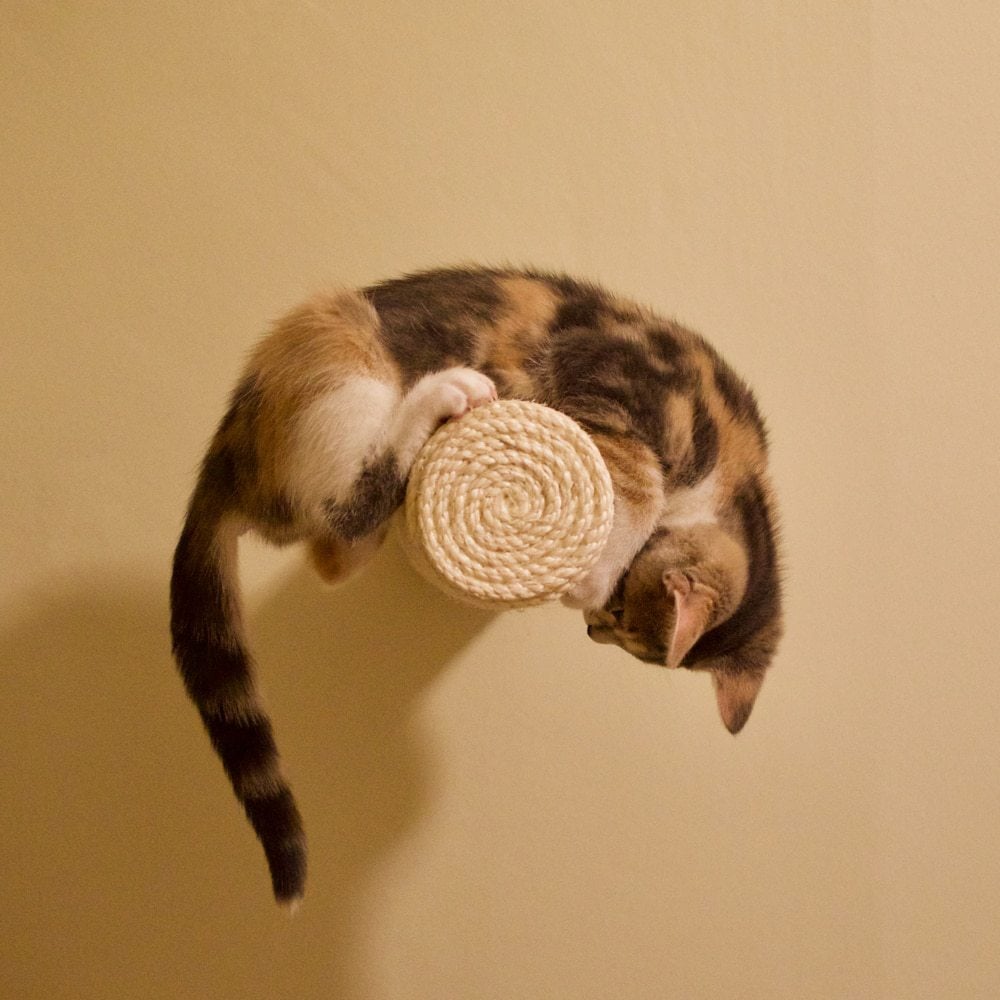
Something Excited Them
A cat might start chasing its tail if they saw something that got them excited. This could be something shiny or even another cat outside. They often start moving around erratically, getting up on their hind legs. It is just their way of releasing all of the excited energy they are experiencing in the moment.
Medical Reasons
Worms
You should also consider that your cat is chasing its own tail because of some health problem it is having. This could be due to worms, which are more common among outdoor cats. Some of the common signs of worms in cats include diarrhea, lethargy, excessive hunger, and general weakness.
Fleas
Another possibility is that your cat has fleas. It might look like it is chasing its tail, when in reality it’s just trying to get a flea off. If you have noticed your cat grooming itself more than usual, this might be the case.
Cats with fleas often develop bald patches due to picking at troublesome areas. Some cats are actually allergic to fleas, which can cause inflammation of the skin. Next time your cat starts chasing its tail, check to see if it seems to be biting itself.
Neurological Issues
A brain tumor or other neurological issue could also be causing your cat to chase its tail. Some other symptoms of these issues include seizures and sudden changes in behavior. If you notice these things, you should see your veterinarian right away. While these kinds of health problems can be very serious, they may be treatable.
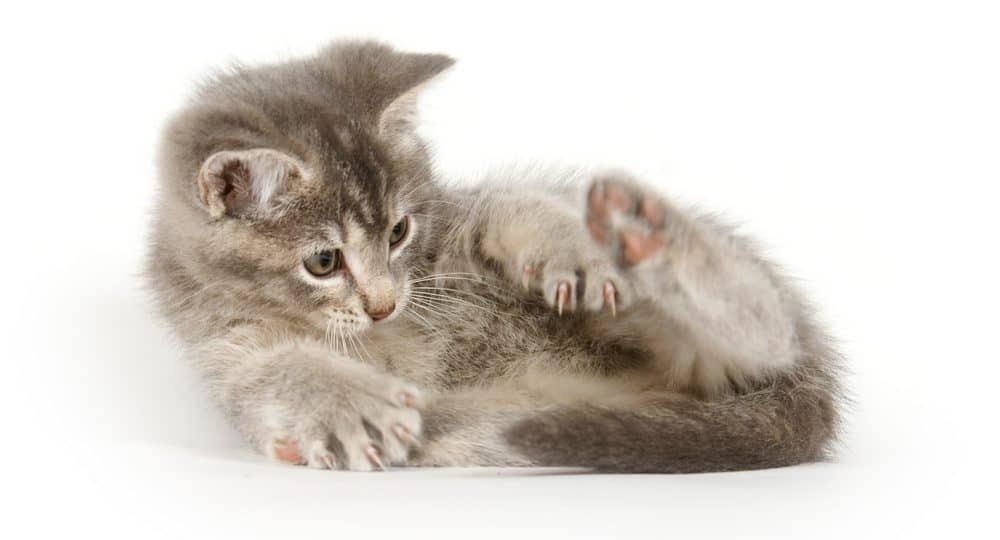
Skin Problems
A skin condition of some kind could also be the reason for your cat chasing its tail. Skin lesions can cause a cat to do this, and they can be quite serious. These lesions can form anywhere on a cat’s body. It is also possible that your cat has allergies that happen to be flaring up.
Cats can be allergic to certain foods, grooming products, and even pollen. There are medications that your veterinarian can prescribe to help your cat with its allergies. You can try another cat food.
“Stud tail” is a fairly common skin condition with cats that can cause them to chase their tail. It can result in a greasy coat due to the increased oil secretion. There are medications that can be used to treat this condition, but it is not curable.
Chasing Other Cat’s Tails
If you have multiple cats in the same house, you might notice them chasing each other’s tails. This is usually harmless playful behavior, and it is especially common among kittens. Litter mates tend do this a lot while they are still young.
You just need to make sure that your cat is not swatting at the tail of another in a way that is truly aggressive. If they are hissing and showing their teeth, it could be a problem and should be addressed.
When to See Your Veterinarian
Tail chasing is pretty common among cats, but if it happens constantly it could be due to an underlying problem. If your cat is chasing its tail a lot, you’ll want to think about visiting your veterinarian. You should also look for common signs of illness, including lethargy, diarrhea, vomiting, and lack of appetite.
As long as your cat is not chasing its tail all day long or doing any harm to itself, it probably isn’t a big deal. The fact is that cats do all sorts of goofy things that even researchers don’t always fully understand. This is definitely not the sort of thing that you should instantly be concerned about, but it is a good idea to keep a close eye on them.
Conclusion
- Many cats chase their tails, and it is usually a perfectly harmless behavior.
- Your cat may be chasing its tail as a way of burning up all of the pent up energy it has inside.
- This behavior is very common among kittens with their litter mates. It is a form of playing and bonding.
- Worms can sometimes cause a cat to chase its tail due to the discomfort they are causing.
- If your cat is biting at its tail, it could have fleas. It might look like they are chasing their tail, but they are really trying to get at a pesky flea.
- Certain skin problems like “stud tail” can cause a cat to do this as well.
- There is a chance that your cat is chasing its tail because of a neurological problem.
- Take your cat to the vet if it is chasing its tail a lot or exhibiting any obvious signs of illness.
